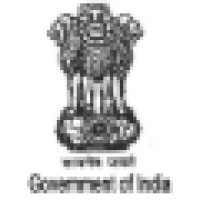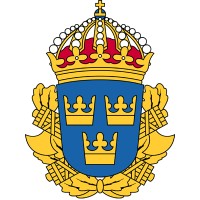Company Cyber Security Posture
NANA
NA Company Details
NA
NA
NA
NA
NA
NA
Scan still pending
NA
NA
Between 200 and 800
This score is AI-generated and less favored by cyber insurers, who prefer the TPRM score.
 NA Global Score
NA Global Score.png)

Company Scoring based on AI Models
| Model Name | Date | Description | Current Score Difference | Score |
|---|---|---|---|---|
| AVERAGE-Industry | 03-12-2025 | This score represents the average cybersecurity rating of companies already scanned within the same industry. It provides a benchmark to compare an individual company's security posture against its industry peers. | N/A | Between 200 and 800 |
Company Cyber Security News & History
| Entity | Type | Severity | Impact | Seen | Url ID | Details | View |
|---|
Company Subsidiaries

NA
Access Data Using Our API

Get company history
.png)
NA Cyber Security News
S.Africa's ex-transport bosses charged over Zuma-era graft case
None
A whistleblower's disclosure details how DOGE may have taken sensitive labor data
The new revelations about DOGE's activities at the labor agency come from a whistleblower in the IT department of the NLRB, who disclosed his ...
Political backlash against DA’s anti-corruption and cyber security proposals
DA MP Glynnis Breytenbach introduces bills for an Anti-Corruption Commission and Cyber Commissioner, but faces opposition from other political parties.
DA proposes new anti-corruption and cyber commission bills to boost accountability and national security
DA's Private Member's Bills propose creating an Anti-Corruption Commission and Cyber Commission to enhance accountability and security in South Africa.
Trump Escalates Use of Official Power to Intimidate and Punish His Perceived Foes
President Trump's first-term efforts to spur law enforcement officials to pursue his political enemies were haphazard, informal and often ...
Capacity crisis: SA hit by 2 679 cybercrimes in 2 years, but cops referred only 83 to NPA
This is as South Africa was seeing an "increasing occurrence of cybercrime incidents and cyberattacks", according to Khumbudzo Ntshavheni, the ...
Information Regulator fears replacement by Cyber Commissioner
Besides draining the fiscus, there will be a substantial overlap between the Information Regulator and the proposed Cyber Commissioner, ...
DA Presents Two Private Member’s Bills to the Justice Committee
The Cyber Commission will be tasked with supporting and strengthening democracy in South Africa by advising, monitoring and establishing cyber ...
State of the nation: Not enough businesses are taking cybercrime seriously enough
Interpol recently revealed that cybercrime, specifically ransomware incidents, cost the South African economy up to 1% of the country's GDP, ...

NA Similar Companies

Arma dei Carabinieri
The Carabinieri Corps is an armed Force permanently enforcing public security. It fully contributes to the "external defense" and "internal security" systems of Italy. As an armed force, it participates in international peacekeeping and security missions and carries out military police functions wi

Government of India
he Government of India, officially known as the Union Government, and also known as the Central Government, was established by the Constitution of India, and is the governing authority of a union of 28 states and seven union territories, collectively called the Republic of India. It is seated in New

FBI Virtual Training Academy
The FBI Virtual Academy is the portal to all FBI training opportunities offered to our external partners. FBI Virtual Academy registration is open to all personnel serving in any agency within the criminal justice or intelligence community – including state, local, tribal, and international law enfo

Politie Nederland
Politiemensen staan midden in de maatschappij, dicht op het nieuws. De politie is daar waar het gebeurt. Het optreden van agenten ligt altijd onder een vergrootglas. Bij de politie ben je 24 uur per dag en voor iedereen in onze diverse samenleving. Integer, moedig, betrouwbaar en verbindend zijn daa

Swedish Police Authority
Vi gör hela Sverige tryggt och säkert! Att arbeta inom polisen är ett av de finaste uppdrag man kan ha. Du bidrar till samhället genom att göra hela Sverige tryggt och säkert. Oavsett om du jobbar i en civil roll eller som polis, är möjligheterna att växa med en större uppgift många. Vi är Sverig

Hong Kong Police Force
Vision That Hong Kong remains one of the safest and most stable societies in the world Our Common Purpose The Hong Kong Police Force will ensure a safe and stable society by : •upholding the rule of law •maintaining law and order •preventing and detecting crime •safeguarding and protecti

Frequently Asked Questions
Explore insights on cybersecurity incidents, risk posture, and Rankiteo's assessments.
NA CyberSecurity History Information
How many cyber incidents has NA faced?
Total Incidents: According to Rankiteo, NA has faced 0 incidents in the past.
What types of cybersecurity incidents have occurred at NA?
Incident Types: The types of cybersecurity incidents that have occurred include .
Additional Questions
What Do We Measure?
















Every week, Rankiteo analyzes billions of signals to give organizations a sharper, faster view of emerging risks. With deeper, more actionable intelligence at their fingertips, security teams can outpace threat actors, respond instantly to Zero-Day attacks, and dramatically shrink their risk exposure window.
These are some of the factors we use to calculate the overall score:
Identify exposed access points, detect misconfigured SSL certificates, and uncover vulnerabilities across the network infrastructure.
Gain visibility into the software components used within an organization to detect vulnerabilities, manage risk, and ensure supply chain security.
Monitor and manage all IT assets and their configurations to ensure accurate, real-time visibility across the company's technology environment.
Leverage real-time insights on active threats, malware campaigns, and emerging vulnerabilities to proactively defend against evolving cyberattacks.




